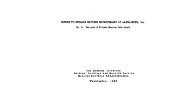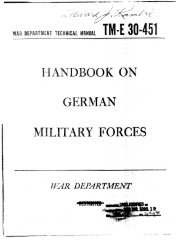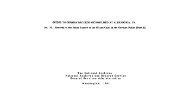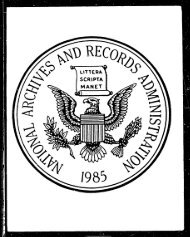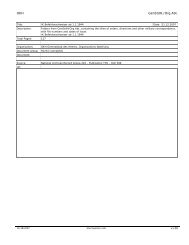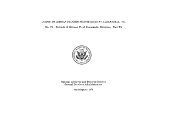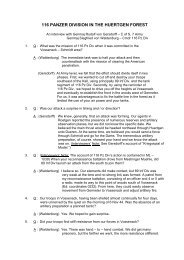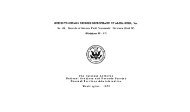miRS-tonpon - Sturmpanzer.com
miRS-tonpon - Sturmpanzer.com
miRS-tonpon - Sturmpanzer.com
Create successful ePaper yourself
Turn your PDF publications into a flip-book with our unique Google optimized e-Paper software.
The proportion and <strong>com</strong>position of skilled OT personnelin Germany until Allied penetration in late winter and earlyspring of 1945* made all figures valueless, is discussed in3315-18 and 20. It can be said here in summary that thereexisted a great dearth of qualified German personnel in 1 responsibleJobs, that the proportion of qualified foreigners although lowerthan in former German occupied territory, remained high, in rearareas especially, and that the picked German personnel was sent tothe aone called Pront-OT. Even in the latter zone, a proportion ofthree foreigners to one German was permitted by regulations, althoughin practice the number of foreigiers apparently did not reach thisproportion in the late autumn and winter of 1944/45.160. WomenWomen regularly working for the OT are estimated to formapproximately 7% of the Organization. The proportion of femaleadministrative assistants such as typists, clerks, etc., to themenial help, such as kitchen and cleaning women, is roughly 3 to 2.The only female OT-eigenes Personal (OT organic personnel) which canbe considered as forming a Unit are the Nachrichtenhelferinnen(Signals Communications assistants) more popularly known as Blitzmadel.They are part of the TO/WE in OT HQs on all levels. The menial helpis recruited locally in the vicinity of the OT camps and theirrelationship to the OT is tenuous if not informal. In the Westapproximately half of the clerical assistants were likewise recruitedfrom local areas such as neighbouring towns and cities. (Regulationsprohibit the employment of German girls under 21 in the Fronteinsatz,j?ront <strong>com</strong>mitment Aroa^thin range of enemy action). The femaleZwangsarbeiter (Forced labour) for the greater part consisted ofBolish and Russian women charged with Communist and Partisan activities.Their number in the West where the need for manpower was greatest, didnot exceed 20,000 and was probably nearer to half that figure.B« Regional Manpower Recruitment and Allocation(a) German Manpowerl6l» In general German personnel in the OT clasified as Kriegsverwendungsf&hig(fit for <strong>com</strong>bat duty) is extremely small even though theorganization stil l contains individuals deferred from army <strong>com</strong>batservice because of their essential occupations if not through theinfluence of their political connections. But there is an appreciablenumber of wounded and incapacitated Germans in administrative positions,In July 1944 for instance, the quota of the EGW for the army wasestablished at 500 men for whom i t received in exchange 2500 Wehrmachtpersonnel incapacitated for further <strong>com</strong>bat service*. In fact OT'sefficiency was markedly lowered through the placing of Germans insupervisory assignments whose only qualification is the fact thatthey are over-age or incapacitated.At the present time the average age of German personnel in the rearzone, except that of the politically, morally unreliable elements,(convict soldiers, homosexuals, etc.) is over 50. . In the battle zonethe 0T has. be<strong>com</strong>e so closely integrated with the Army Engineers throu^ithe FestungspionierstKbe.(Fortress Engineers Staffs) that thedifferentiation between them has practically vanished. Nor can i t besaid that there are any age limits at this time; Juveniles are asacceptable as septuagenarians, as far as their physical condition permits.For a full discussion of recent developments in <strong>com</strong>position anddistribution of 0T manpower, see IB 15 to 18# and IIIBbl23,-166




